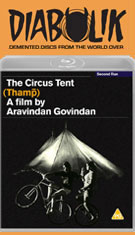
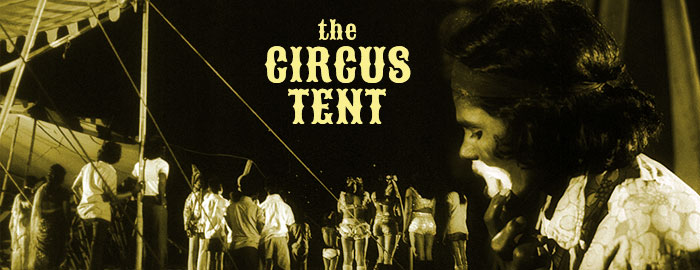


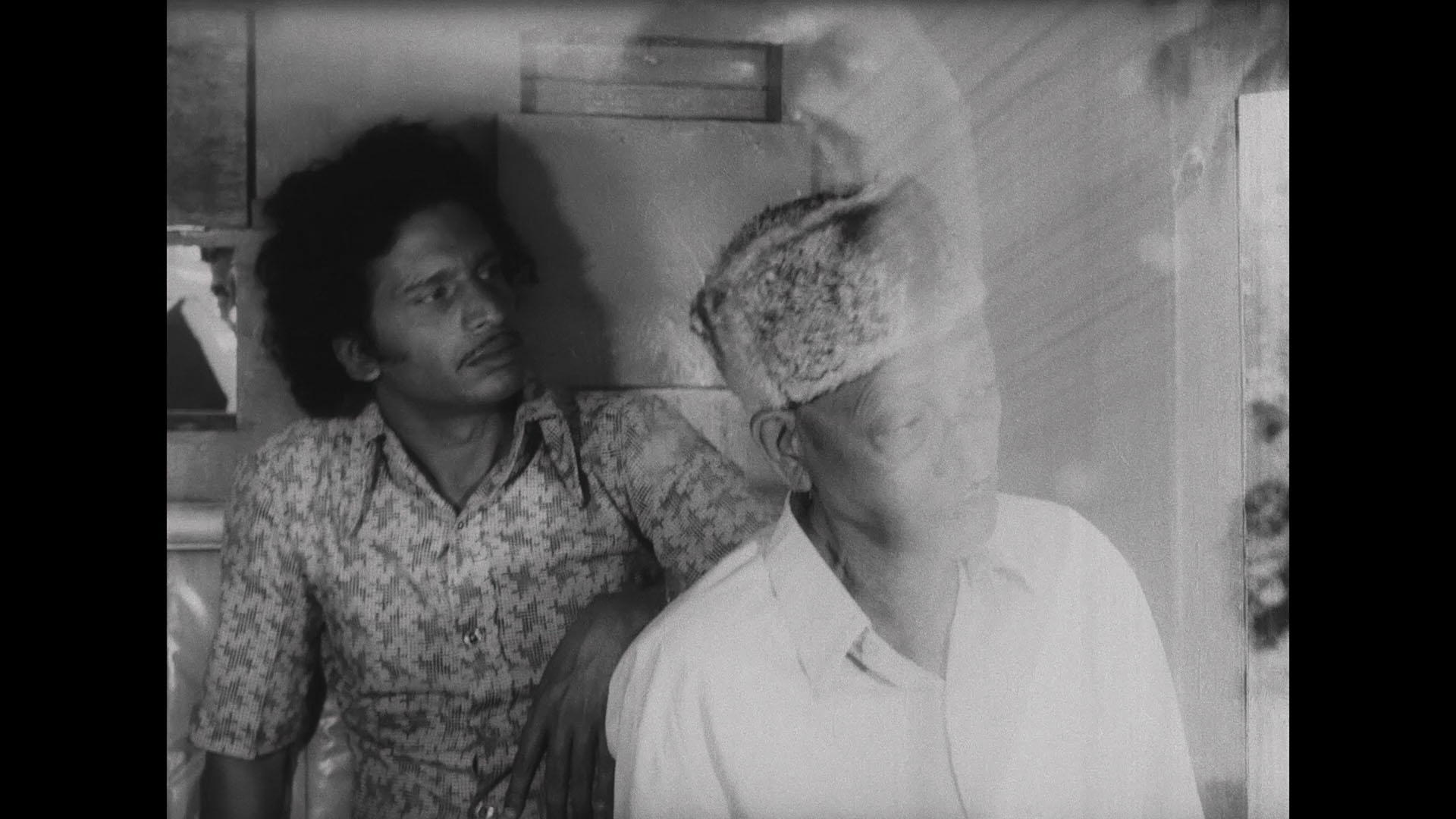 work of 1970s Indian cinema almost lost to the ravages of time, The Circus Tent (Thamp̄ ) is one of the key works by
work of 1970s Indian cinema almost lost to the ravages of time, The Circus Tent (Thamp̄ ) is one of the key works by 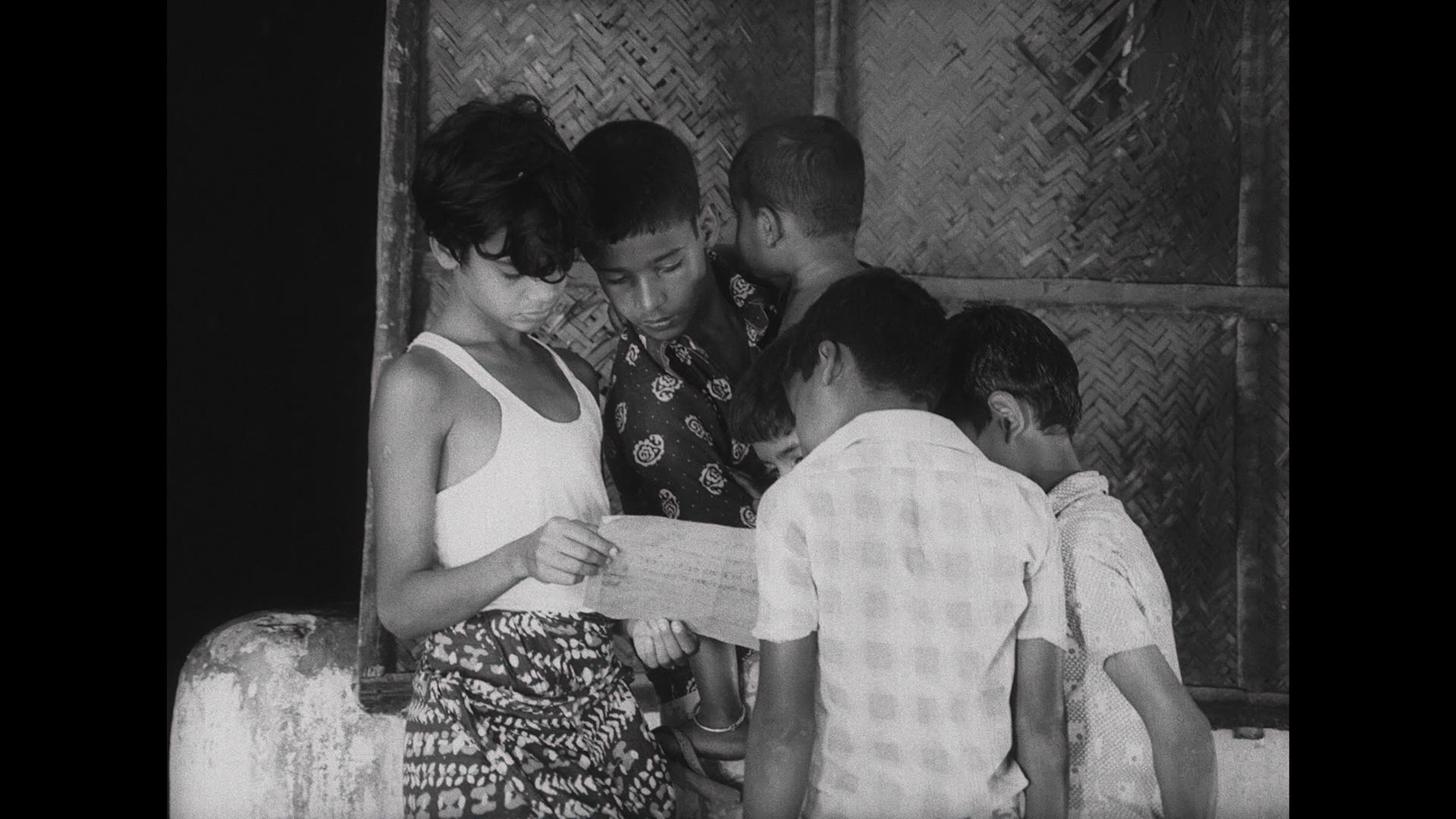 filmmaker Aravindan Govindan, whose earlier career paths had ranged from botanist to comic strip artist. The making of the film is inseparable from what's on the screen as he arranged for a real performing troupe, the Great Chitra Circus, to set up camp in the riverside village of Thirunavaya. What unfolds is largely documentary footage, essentially, capturing the residents' reactions to the performances and chronicling the troupe members themselves preparing for and performing their acts including acrobatics and clown routines. The fact that many of the audience members had never seen a circus before gives the film a kind of kinetic, spontaneous energy, and it's woven through with a predetermined story about one young man who's come back home to find himself both restless and dawn to the newcomers who are destined to stay for only a short while.
filmmaker Aravindan Govindan, whose earlier career paths had ranged from botanist to comic strip artist. The making of the film is inseparable from what's on the screen as he arranged for a real performing troupe, the Great Chitra Circus, to set up camp in the riverside village of Thirunavaya. What unfolds is largely documentary footage, essentially, capturing the residents' reactions to the performances and chronicling the troupe members themselves preparing for and performing their acts including acrobatics and clown routines. The fact that many of the audience members had never seen a circus before gives the film a kind of kinetic, spontaneous energy, and it's woven through with a predetermined story about one young man who's come back home to find himself both restless and dawn to the newcomers who are destined to stay for only a short while. 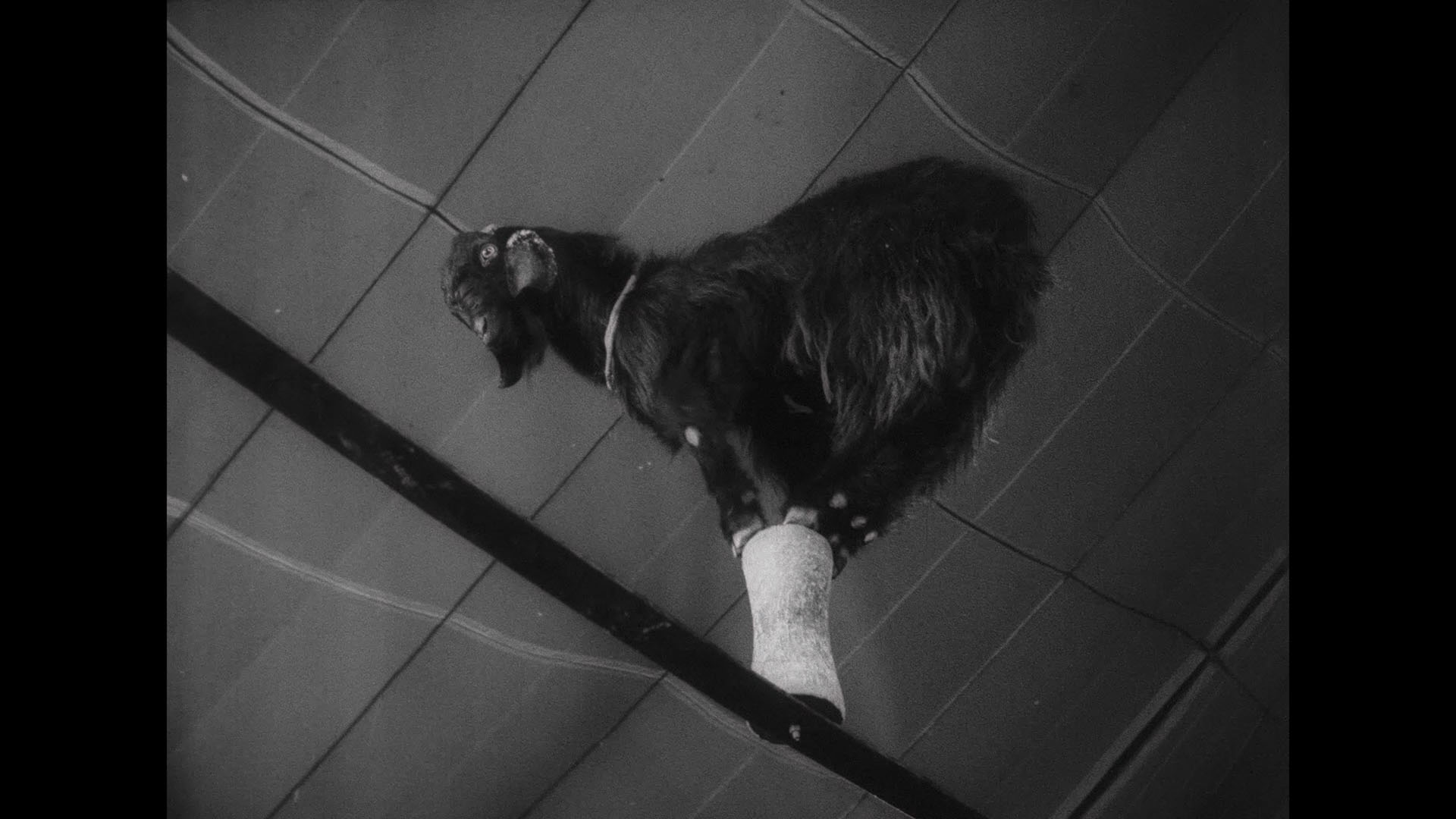 people are drawn to performing and escaping out of their
people are drawn to performing and escaping out of their 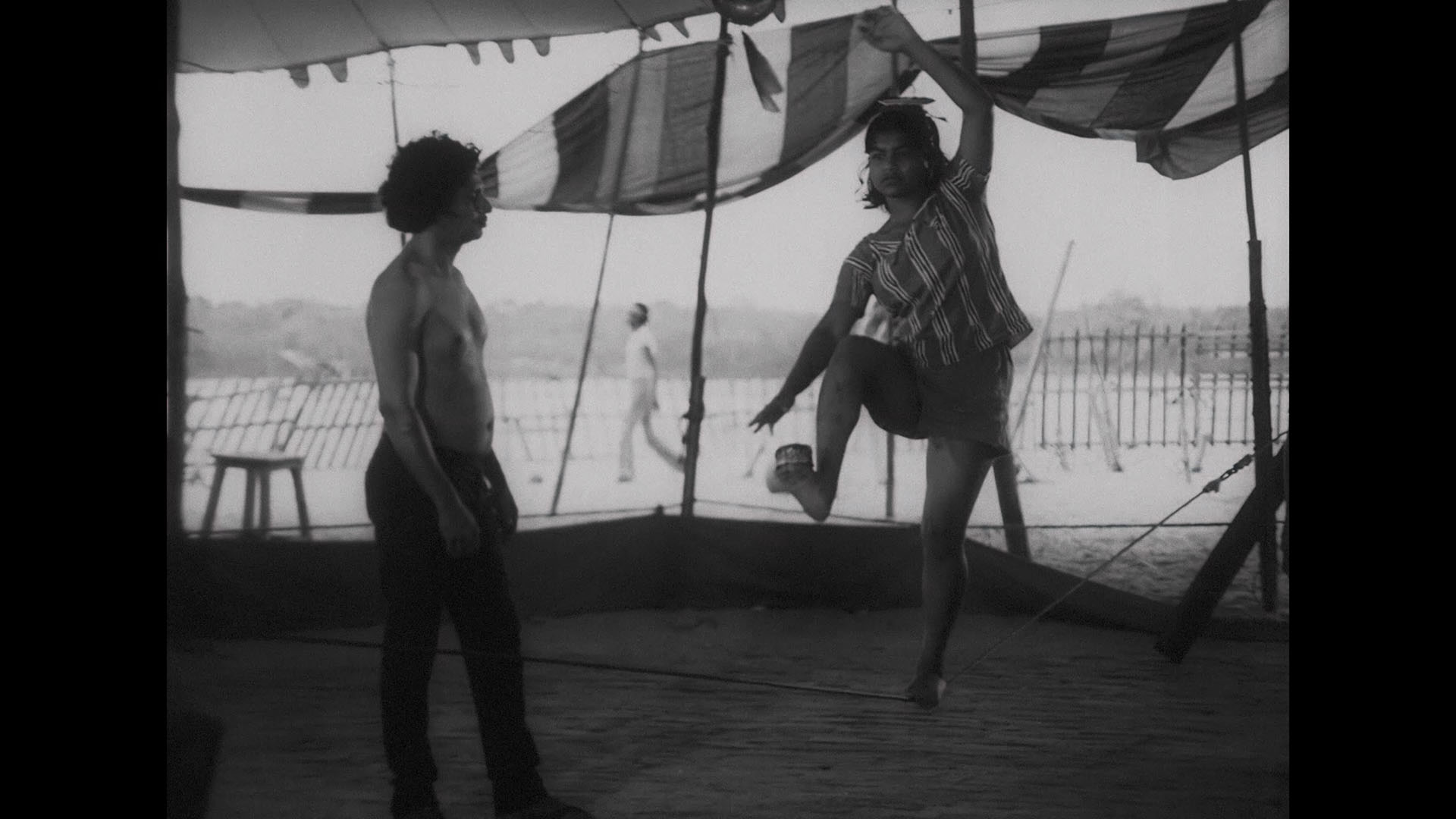 own personas. The cinematography is gorgeous as well, particularly the atmospheric night scenes, and benefits greatly from a much-needed 4K restoration by Film Heritage Foundation. According to reports the surviving elements were in dire condition with the only screenable print featuring no gray scale whatsoever, and a dupe negative was largely used to resuscitate its intended look with spectacular results.
own personas. The cinematography is gorgeous as well, particularly the atmospheric night scenes, and benefits greatly from a much-needed 4K restoration by Film Heritage Foundation. According to reports the surviving elements were in dire condition with the only screenable print featuring no gray scale whatsoever, and a dupe negative was largely used to resuscitate its intended look with spectacular results. 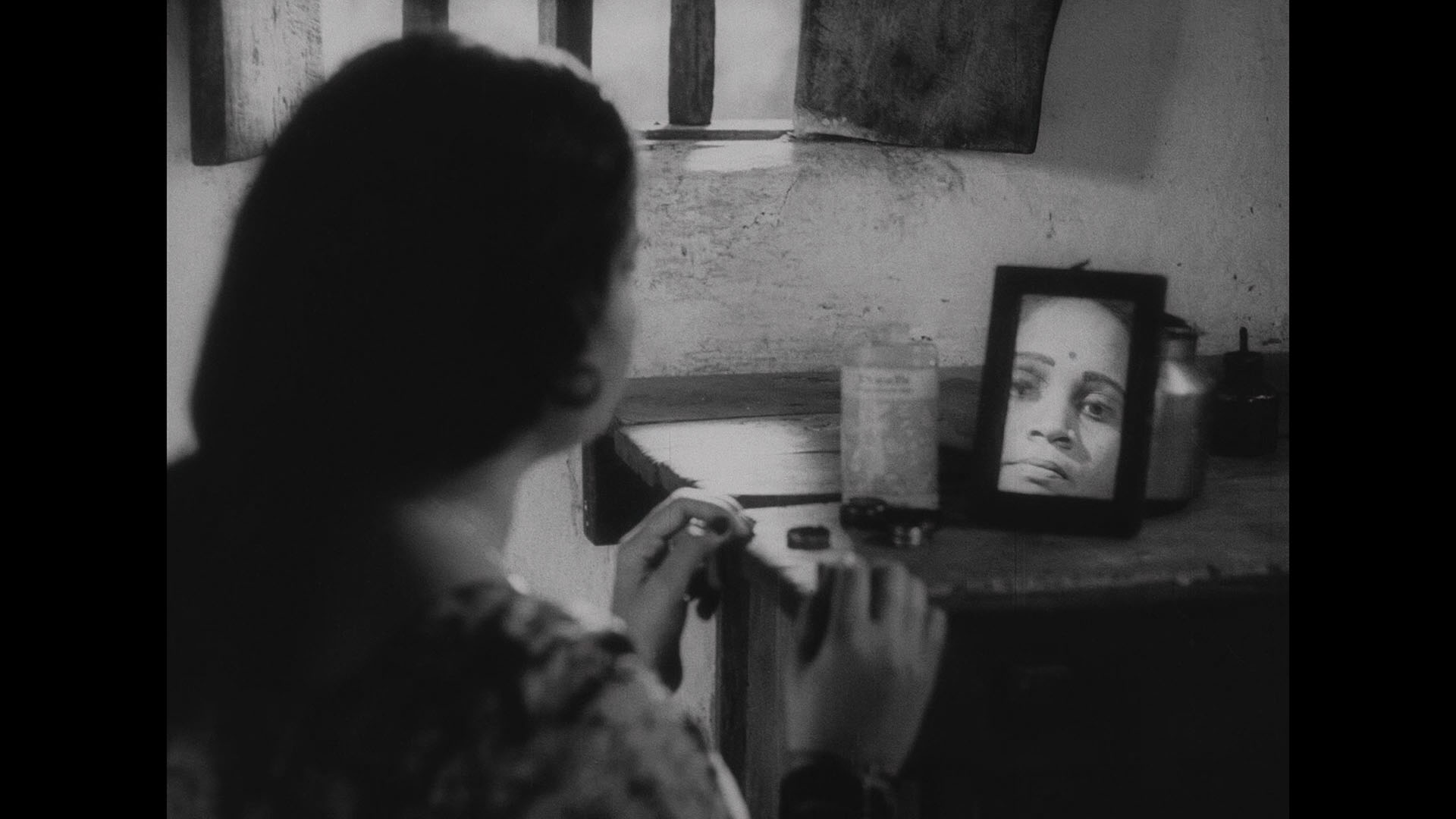 A new interview with photographer Ramu Aravindan (8m26s), son of the filmmaker, is a great addition here with plenty of tales about the
A new interview with photographer Ramu Aravindan (8m26s), son of the filmmaker, is a great addition here with plenty of tales about the 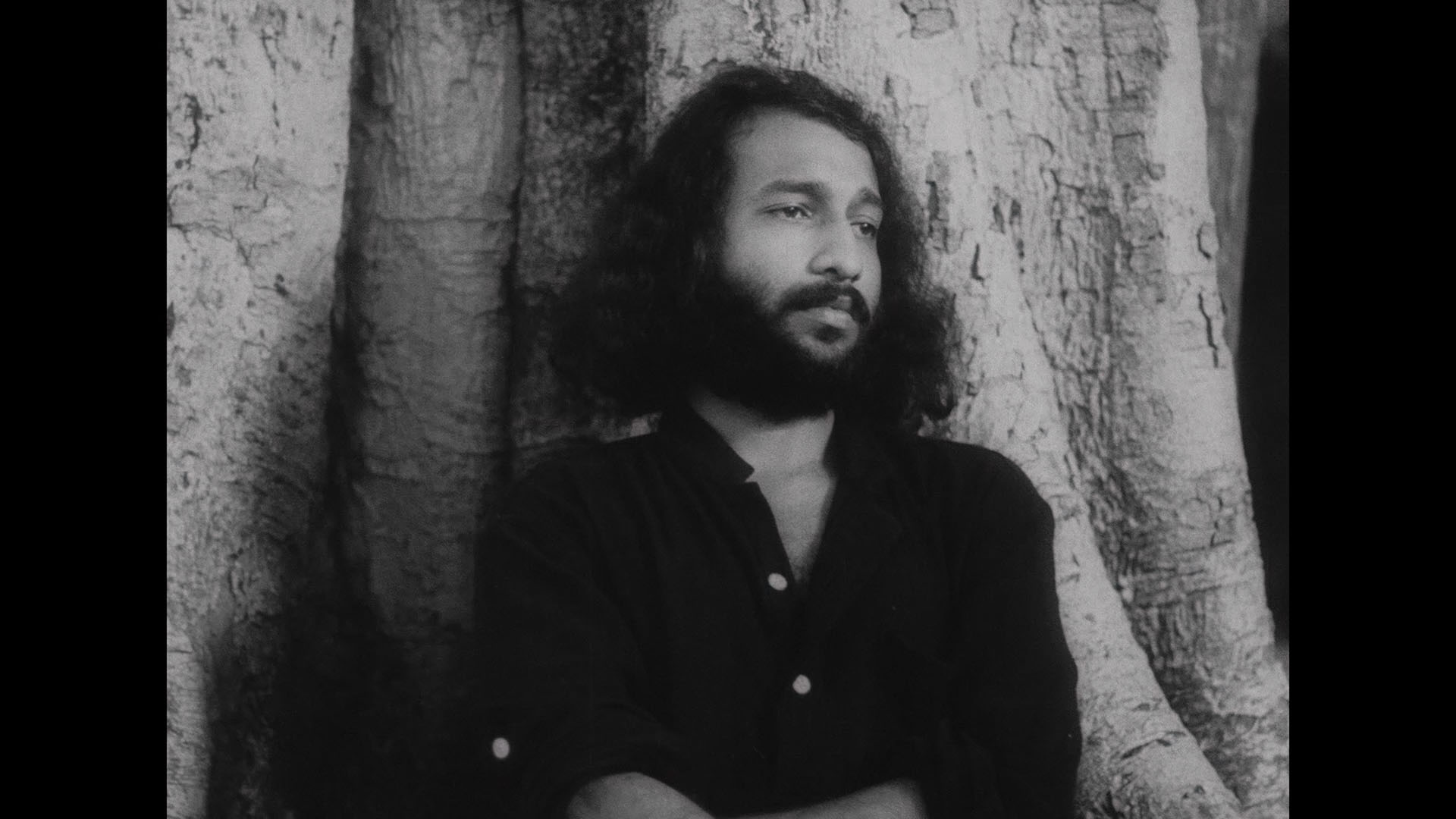 director's other creative lives outside of cinema and the way he fell into working behind the camera in the mid-'70s. " The Circus Tent at Cannes 2022" (27m46s) features Shivendra Singh Dungarpur and actor Jalaja interviewed by writer and broadcaster Anupama Chopra in what looks like a conference room about the warm reception to the film upon the screening of its restoration, as well as a discussion of what it means to local Indian film history and how it ties in with other films in the New Indian Cinema movement. Finally the disc comes with a 24-page booklet with an essay by Dungarpur about the film's creation, how the circus setting is perceived in India, and the film's significance despite its very near slide into oblivion.
director's other creative lives outside of cinema and the way he fell into working behind the camera in the mid-'70s. " The Circus Tent at Cannes 2022" (27m46s) features Shivendra Singh Dungarpur and actor Jalaja interviewed by writer and broadcaster Anupama Chopra in what looks like a conference room about the warm reception to the film upon the screening of its restoration, as well as a discussion of what it means to local Indian film history and how it ties in with other films in the New Indian Cinema movement. Finally the disc comes with a 24-page booklet with an essay by Dungarpur about the film's creation, how the circus setting is perceived in India, and the film's significance despite its very near slide into oblivion.![]()